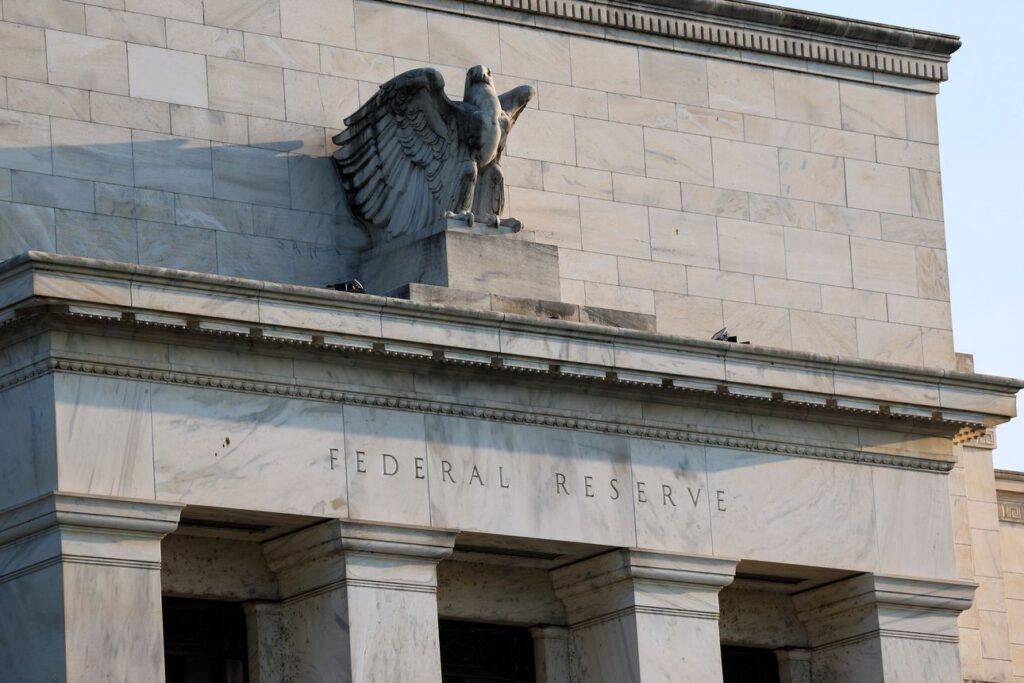
After an unexpectedly hawkish Federal Reserve raised interest rates by 75 basis points for the third consecutive time last week, all eyes were on markets and the economy. Few, however, paid attention to the effect persistent inflation and higher interest rates will have on Uncle Sam.
That’s surprising. Gross interest expense on the national debt hit $88 billion in August according to the Monthly Treasury Statement. That’s a stunning annualized rate of $1.06 trillion. Interest on the national debt is exploding and heading toward what economists refer to as a “doom loop”—the vicious cycle in which the government’s borrowing to pay interest generates yet more interest and yet more borrowing.
Net interest expense (gross expense minus the interest received) hit $63 billion in August, or $756 billion a year. That’s a lot of money in the context of a $6 trillion federal budget and a $25 trillion economy.
The August numbers barely reflect the impact of the Fed’s interest-rate hikes between March and July, much less last Wednesday’s increase and the additional 1.25% by year’s end implied by the Fed’s new guidance. It’s highly likely that gross interest expense will rise well above $1 trillion a year and surpass Social Security as the largest item in the federal budget.
The Fed’s more hawkish guidance calls for “higher rates for longer,” even if it brings on recession. The central bank is also shrinking its holdings of Treasurys under its quantitative-tightening policy, requiring the Treasury Department to find alternative buyers. Weak demand will likely push rates higher, if not destabilize the Treasury market to some degree.
Yet even if the Fed backs off, or recession intervenes, that won’t relieve pressure on Uncle Sam. Treasury debt has reached record levels, and higher federal interest expense is already baked in. That will constrain Washington’s capacity to deliver fiscal stimulus to a struggling economy during the next recession. Constrained or not, the government will doubtless attempt to do so. That means issuing more debt, since the federal budget is in perpetual deficit.
That is exactly what has happened in the past 2½ years: Uncle Sam issued $7 trillion of new debt during the Covid pandemic, which took publicly held national debt to its present $24 trillion up from $17 trillion in February 2020.
The driving force behind the growth of our national debt alternates between surging interest costs attending a strong or inflationary economy and enormous additions to principal from deficit-financed stimulus during recession. In either case, the national debt is growing inexorably. How could financial markets ignore it?
One school of thought asserts that so long as the economy is growing at a faster rate than the debt, the increase in the national debt doesn’t matter.
But that certainly isn’t happening now. In principal amount, the national debt has exploded and the cost of debt service is escalating, too. The current $756 billion annual net interest expense on the $24 trillion of publicly held debt implies a required economic growth rate of more than 3% in a $25 trillion economy in order for the debt “not to matter.” The average forecast for economic growth in calendar year 2022 is less than 1%, and many economists expect negative growth—i.e., recession—in 2023.
Not only are rising interest rates driving up federal interest expense dramatically; inflation is propelling growth in government spending. Social Security benefits are adjusted based on the average of the consumer-price index reports for July, August and September each year. We have reports for two months and don’t need the third to know that benefits will increase next year to roughly $1.3 trillion from $1.2 trillion (or more than 8%).
Healthcare costs always exceed the rate of inflation, too. That guarantees double-digit growth next year in Medicare from about $710 billion in fiscal 2022 based on the first 11 months, and in the other government healthcare programs categorized as “health” in the Monthly Treasury Statement, which amounted to $915 billion in fiscal 2022. Assuming only 10% healthcare inflation, these two categories combined will grow by $163 billion.
Naturally, if we do slip—or plummet—into a serious recession, federal income-tax revenue will erode. Even before recession, the past nine months of declining stock and bond prices virtually assure an almost complete collapse in capital-gains-tax revenue come tax time next April. Loss of that category alone—which averages about 12% of federal individual income-tax revenue—will necessitate hundreds of billions in borrowing to replace lost revenue.
Inflation and interest rates are inflicting painful damage today. Yet seemingly without notice the national debt is working like a cancer sapping the nation’s long-term economic vitality. Whether we reach the “doom loop,” or just become mired in stagflation, unchecked government spending and mounting national debt will drain all growth potential from the national economy sooner rather than later.
![]()
Red Jahncke is a nationally recognized columnist, who writes about politics and policy. His columns appear in numerous national publications, such as The Wall Street Journal, Bloomberg, USA Today, The Hill, Issues & Insights and National Review as well as many Connecticut newspapers.


